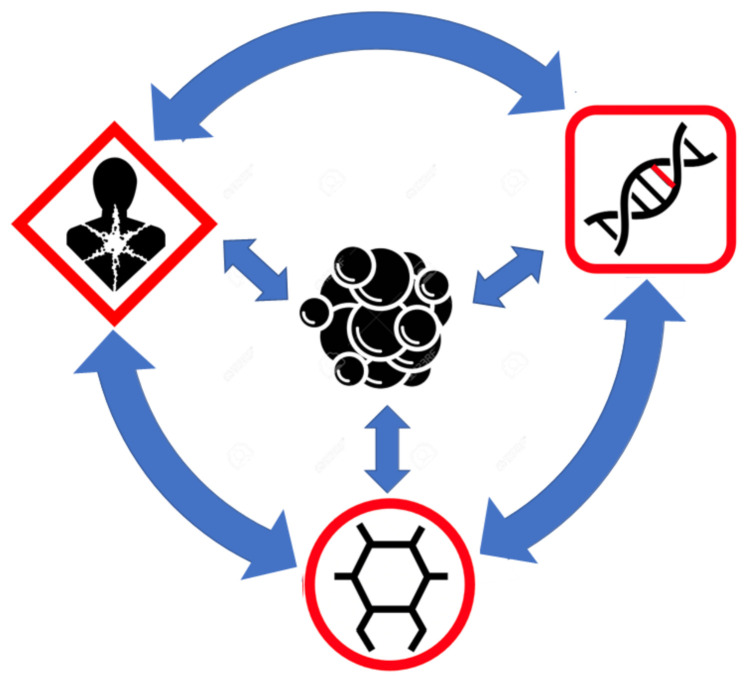Figure 2.
An interconnected, multi-omics view of cancer. In this view the exposome, the genome, and the metabolome all contribute individually to the development of cancer (arrows pointing inward). Any of these three “omes” is capable of initiating oncogenic transformation. Once transformed, the growing tumor also modifies the surrounding metabolome, exposome, and genome through its own altered metabolism and its own altered tumor microenvironment (arrows pointing outward). This constant feedback seems to amplify many of the genetic/metabolic drivers of cancer and helps manifest most of the hallmarks of cancer. The arrows connecting the genome with the exposome, and the metabolome are intended to show that each of these “omes” impacts the other. The genome can affect the exposome (or one’s proclivity to certain lifestyles or exposures), the exposome can impact the genome (through mutagenesis or ROS induced modifications). Likewise, the metabolome can alter the exposome (via chemical or enzymatic processes), while the exposome can also impact the metabolome (via catabolic or anabolic processes on exposure agents). Finally, the metabolome can affect the genome through epigenetic and direct genetic modifications, while the genome can alter the metabolome through genetically driven metabolic reprogramming.

